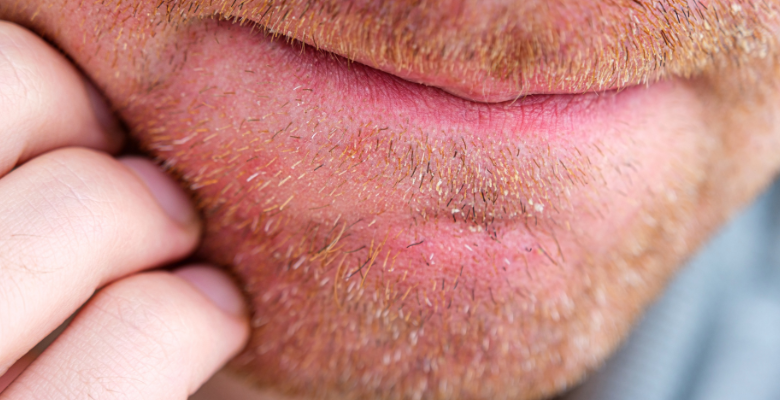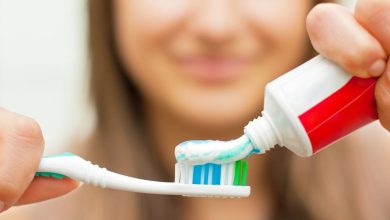How to treat seborrheic dermatitis naturally?

Seborrheic dermatitis is a common skin condition characterized by red, itchy, and flaky skin. While there is no cure for seborrheic dermatitis, there are several treatment options available to help manage the symptoms. Here are some commonly recommended approaches:
Medicated shampoos: Use over-the-counter shampoos containing active ingredients like pyrithione zinc, selenium sulfide, ketoconazole, or coal tar. These ingredients help control the overgrowth of yeast on the scalp, which is often associated with seborrheic dermatitis. Follow the instructions on the product and use the shampoo as directed.
Topical corticosteroids: Your doctor may prescribe a mild to moderate strength topical corticosteroid cream or ointment to reduce inflammation and relieve itching. It’s important to use these medications as directed and only for the prescribed duration, as prolonged use of strong corticosteroids can have side effects.
Antifungal creams: In cases where a yeast infection is suspected or confirmed, your doctor may prescribe antifungal creams or ointments. These medications help combat the yeast overgrowth associated with seborrheic dermatitis.
Topical calcineurin inhibitors: Medications like tacrolimus or pimecrolimus may be prescribed for seborrheic dermatitis affecting the face or other sensitive areas. These medications help reduce inflammation and are particularly useful when corticosteroids cannot be used or are not effective.
Moisturizers: Regularly applying a gentle, fragrance-free moisturizer can help alleviate dryness and scaling associated with seborrheic dermatitis. Look for products that are non-comedogenic and suitable for sensitive skin.
Lifestyle modifications: Taking steps to manage triggers and maintain a healthy skin routine can also help manage seborrheic dermatitis. Avoid harsh soaps or cleansers, minimize stress levels, maintain good hygiene, and gently wash affected areas without excessive scrubbing.
Phototherapy: In severe or resistant cases, light therapy (phototherapy) may be recommended. This involves exposing the affected skin to specific wavelengths of light to reduce inflammation and control symptoms.
Consult a holistic dermatologist
It’s important to consult a holistic dermatologist for a proper diagnosis and personalized treatment plan, especially if your symptoms are severe, persistent, or affecting your quality of life. They can evaluate your condition, recommend appropriate treatments, and provide guidance based on how to treat seborrheic dermatitis.
Seborrheic dermatitis is a chronic condition, and currently, there is no known cure for it. However, there are various treatment options available that can effectively manage the symptoms and provide relief. These treatments aim to control inflammation, reduce itching, and prevent flare-ups. It’s important to consult a dermatologist for a proper diagnosis and personalized treatment plan. They can assess the severity of your condition, provide appropriate recommendations, and guide you on the best course of action based on your individual needs. While seborrheic dermatitis cannot be cured, with proper management, most people can effectively control their symptoms and minimize flare-ups. Also concerning how to treat seborrheic dermatitis, managing triggers and adopting a healthy skincare routine can help manage seborrheic dermatitis. Avoiding harsh soaps or cleansers, minimizing stress levels, maintaining good hygiene, and gently washing affected areas without excessive scrubbing can be beneficial.
Here are some suggestions:
- Keep the affected area clean: Wash your skin regularly with a gentle cleanser or a medicated shampoo specifically designed for seborrheic dermatitis. Avoid harsh soaps or cleansers that can irritate the skin further.
- Moisturize regularly: Apply a gentle moisturizer to the affected areas to soothe dryness and reduce flaking. Look for moisturizers that are non-comedogenic and fragrance-free.
- Tea tree oil: Dilute tea tree oil with a carrier oil, such as coconut oil or olive oil, and apply it to the affected areas. Tea tree oil has antifungal and anti-inflammatory properties that may help relieve symptoms.
- Aloe vera gel: Apply pure aloe vera gel to the affected areas to soothe inflammation and reduce itching. Aloe vera has natural healing and anti-inflammatory properties.
- Apple cider vinegar: Mix equal parts of apple cider vinegar and water and apply it to the scalp or affected areas using a cotton ball. Leave it on for a few minutes before rinsing. Apple cider vinegar has antifungal properties that can help manage the symptoms.
- Omega-3 fatty acids: Include foods rich in omega-3 fatty acids, such as fatty fish (salmon, mackerel), flaxseeds, chia seeds, and walnuts in your diet. Omega-3 fatty acids have anti-inflammatory properties that may help reduce symptoms.
- Stress management: Stress can trigger or worsen seborrheic dermatitis. Practice stress management techniques like meditation, deep breathing exercises, or engaging in activities you enjoy to help reduce stress levels.
- Avoid triggers: Identify and avoid any triggers that worsen your symptoms. Common triggers include cold weather, dry air, certain skincare products, and allergens.
- Regularly wash bedding and hats: Wash your pillowcases, beddings, and hats regularly to remove any oils or irritants that could contribute to the condition.
It’s important to note that while these natural remedies may provide relief for some individuals, everyone’s skin is different. If your symptoms persist or worsen, it is recommended to consult a holistic dermatologist for a proper diagnosis and personalized treatment plan.
Read more articles at Recablog





